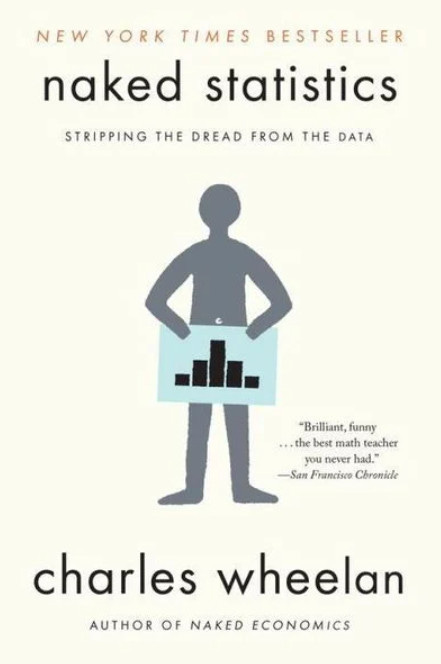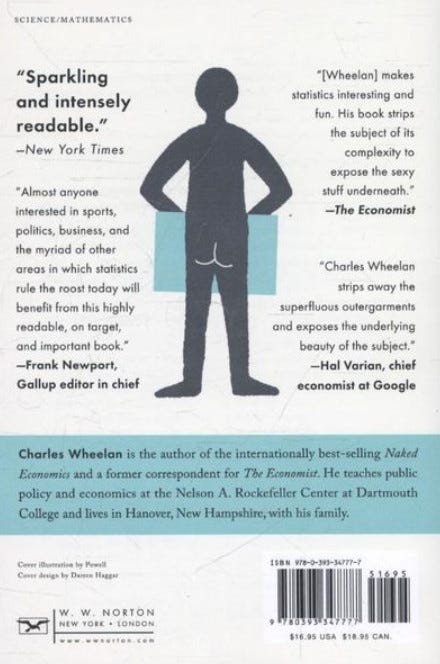Review of the book ‘Naked Statistics’ by Charles Wheelan
How to answer important questions and make meaningful conclusions.
I loved the New York Times bestseller ‘Naked Statistics’, not because I learned many new concepts of Data Science or Statistics, but primarily because of the funny and sometimes silly examples that made me laugh out loud.
The book ‘Naked Statistics’ is part of a series, which includes ‘Naked Economics’ and ‘Naked Money’ by the same author, Charles Wheelan. However, they can be read independently of each other.
The first part of the book gives the reader an idea about what statistics can and can’t do, and why we need more than mathematical precision alone to answer important questions. As the book progresses, the reader gets a crash course in probability. The end of the book is all about how meaningful conclusions can be drawn from data, as statistics is all about insights.
I would definitely recommend reading it. My favorite ‘silly’ example was about lost buses in a city with a marathon and a sausage festival on the same day. You, as a reader, act in a kind of superhero way to find out where a specific lost and found bus was originally headed to: the marathon or the sausage festival?
But I also liked the examples where Wheelan showed us how Data Science can help solve real-world problems, from important social questions to prosecuting criminals. Sometimes the examples made a twist in the story and kept you marveling.
My favorite part of the book was the chapter about the Central Limit Theorem. I have never heard anyone talk about this basic statistical principle with such great fun, neither at university nor in any work environment. Particularly good about that chapter was that the author started with everybody’s basic intuition behind this powerful theorem. The construction of different rooms with different kinds of people in it to explain terms like ‘Regression coefficient’ was written particularly well.
His examples read like great stories. The book made me laugh out loud several times, and the different examples kept me turning the pages. However, I didn’t like that the prior knowledge of mathematics and statistics required to read the book was quite low in the beginning, but kind of advanced in the end. Nevertheless, I would still recommend reading ‘Naked Statistics’ not only to data scientists or those who wish to become data scientists, but to everybody who is interested in how data can be used to make sense of the world.
The essential message of this book is that we need to carefully think about how to use data wisely and well, because today information and data are very easy to gather and everybody with a computer can analyze it. Data is valuable, and Facebook and Google are proof of that. I would give ‘Naked Statistics’ a 7 out of 10.






Great book!